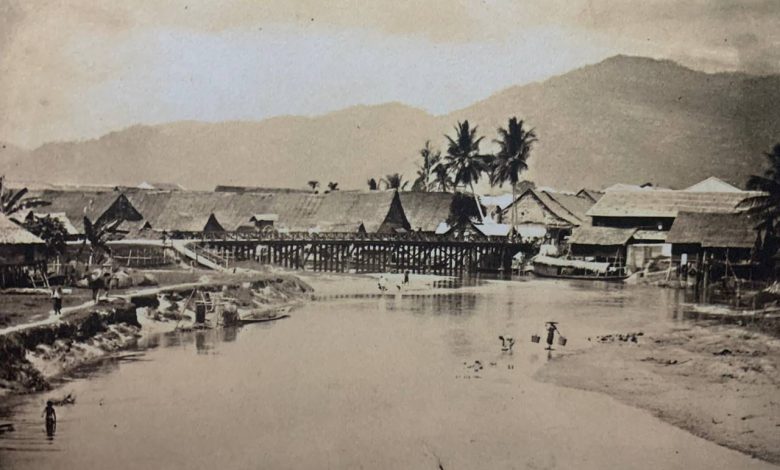

By: Aida Aziz
Kampung Paloh which is located in the city of Ipoh was once a village that contributed to the rapid development of Ipoh.
It is understood that the settlement, which is full of Malay heritage, existed around the year 1700 as a village of the Malay and Orang Asli communities.
According to the Secretary of the Perak Heritage Association, Nor Hisham Zulkiflee, the evidence is further strengthened by British colonial records as early as 1875.
Elaborating on the origin of the name Paloh itself, Nor Hisham said the village was opened by an individual called Toh Paloh.
He said again, the meaning of paloh or palung refers to the condition of the area which is uneven and contains water.
“Paloh also means ‘lubuk’ (a pool of stagnant water in the river). According to sources, the area used to house several tin smelting factories from Malay ore.
“There used to be three boat bases in Ipoh, Paloh was the first stop then Kampung Ipoh and Kampung Masjid Lama,” he said.
He said again, according to history, during the colonial era, Jalan Datoh including Kampung Paloh and Kampung Kuchai was a Malay settlement, known as the Malay Settlement.
“Entering the 20th century, we can see Paloh growing as a centre of Malay community activities.
“From the old photo evidence of Sultan’s meeting with the Malay community, we can compare Paloh to Kampung Baru in Kuala Lumpur.
“It is indeed synonymous with the Malays, many activities of the Malay community are there,” he said.
Meanwhile, when commenting on a recently published book titled “Paloh: Founded by Hakka, Made Vibrant by The Cantonese”, the historical activist disagreed with what was presented.
Not denying the contribution of the Chinese community in the development of Ipoh, he claimed that the information presented was inaccurate.
“I think the title of the book is a bit misleading, not to deny the contribution of other races to develop Ipoh.
“How can it be that Paloh was opened by the Hakka? While Paloh already existed as a Malay and Orang Asli community village in British colonial records.
“In the 1879 census, the total population in Kinta, including Ipoh, consisted of 7,292 Malays and 996 Chinese.
“De Morgan himself wrote Ipoh as a Malay & Sakai village while Sir Hugh Low stated Ipoh as the largest Malay centre in Kinta in the 1880s,” he emphasized.
He also said that the rapid development in Ipoh once upon a time also had something to do with the efforts of Dato’ Panglima Kinta Yusuf.
“The development of the city of Ipoh by the great contribution of the Chinese is not being denied here, but it is also not forgotten that the initial development was pioneered by the Malays.
“The early stage of business in Ipoh was pioneered by the Malays and proved through a petition to the Kinta Magistrate in 1883 which recorded the names of 15 Malay traders and five Chinese traders.
“The village of Ipoh developed into a city due to the efforts of Dato’ Panglima Kinta Yusuff who encouraged the influx of foreign immigrants.
“Including changing the status of Malay village land to shop lots sold to the Chinese for $25 per lot,” he explained.
He said the existence of the Paloh Mosque and the Islamic cemetery on Jalan Bendahara is also proof that Kampung Paloh is synonymous with the Malay community.
In addition, he said, the early history of the UMNO flag was also chosen in a meeting held in Ipoh.
“It is believed that the meeting took place at Madrasah Sharifah Masjid Paloh.
“The UMNO flag used today was also decided during the meeting, around 1946,” he said.


